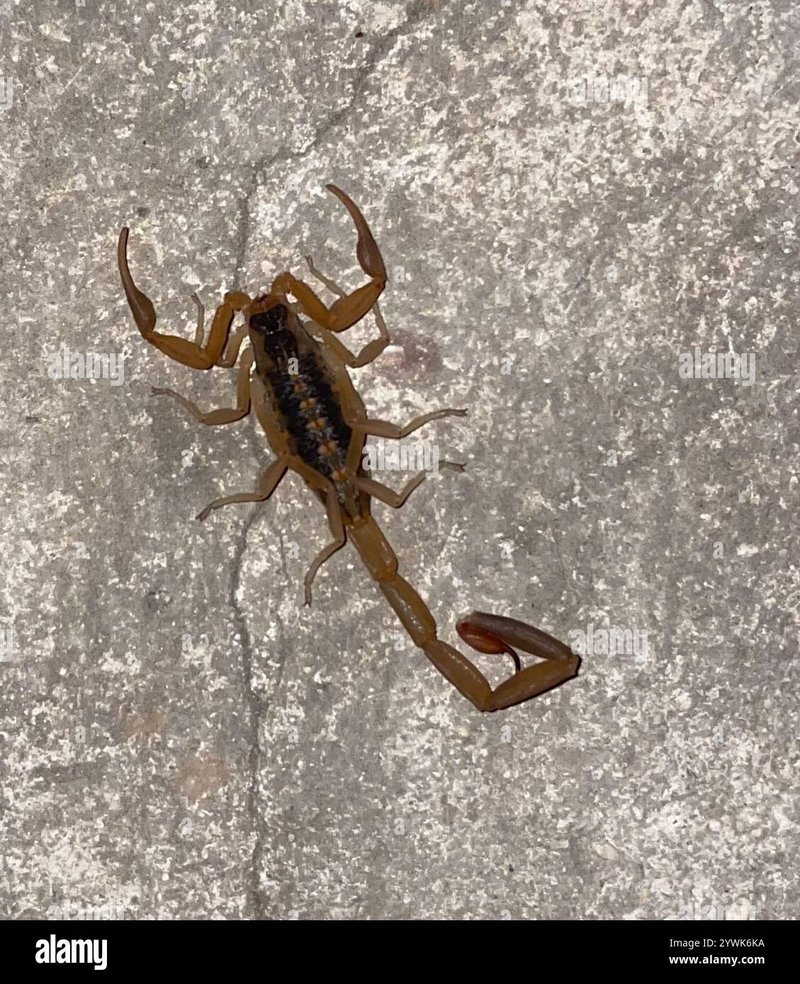
Imagine you’re at a grand party, and suddenly you’re introduced to someone who’s both fascinating and a little prickly—quite literally! That’s how it feels when you first meet a striped bark scorpion. Knowing how to interact with them is just as important as knowing how to care for them. So let’s dig into the do’s and don’ts of handling your scorpion safely, making sure you keep things fun and safe for both of you.
Know Your Striped Bark Scorpion
Before you even think about handling your striped bark scorpion, it’s crucial to understand what makes them tick. These little guys are nocturnal hunters, which means they come alive when the sun goes down. They primarily feed on insects and other small creatures. Their bodies are designed to adapt to their environment, making them masterful climbers and diggers.
Their venom is strong enough to subdue their prey, but for humans, it usually only causes mild pain and irritation—like a bee sting. However, people with allergies or certain health conditions might react differently, so it’s essential to treat them with respect. Understanding their behavior will not only help you handle them better but also enhance your bond with your new pet.
Preparation is Key
So, how do you prepare for handling your striped bark scorpion? Here are some steps to set yourself up for success:
- Clean your hands: Always wash your hands before and after handling to prevent any contamination.
- Choose the right environment: Find a calm, quiet area without too many distractions. Bright lights and loud noises can stress out your scorpion.
- Have the right tools: A pair of long tweezers or a scorpion hook can help you safely guide your scorpion without putting yourself too close to its stingers.
By following these simple preparation steps, you reduce the chances of accidents and ensure a smoother handling experience.
Do’s of Handling Your Striped Bark Scorpion
Handling your striped bark scorpion comes down to a few straightforward do’s that can make the experience enjoyable for both of you:
- Be gentle: Always handle your scorpion slowly and gently. Quick movements can scare them, causing them to react defensively.
- Respect their space: If your scorpion shows signs of stress, like curling its tail or trying to escape, it’s best to return them to their habitat.
- Observe their behavior: Spend some time watching your scorpion before handling it. Understanding when they are calm versus when they feel threatened will help you gauge the right time to interact.
These practices are crucial not just for safety but also for building trust between you and your scorpion. They might look tough, but they can be quite shy!
Don’ts of Handling Your Striped Bark Scorpion
Now that you know what to do, let’s cover some important don’ts:
- Don’t squeeze or grip tightly: This could hurt your scorpion and lead to panic, increasing the likelihood of a sting.
- Avoid sudden movements: Quick motions can trigger a defensive reaction, so keep your movements smooth and steady.
- Never handle during molting: Scorpions shed their exoskeletons as they grow, and this is a vulnerable time for them. Handling during this time can lead to stress or injury.
By avoiding these common pitfalls, you can create a safe environment for both you and your striped bark scorpion.
What to Do When You Get Stung
Even with the best precautions, accidents happen. If you do get stung, here’s how to handle it:
1. Stay calm: Panicking will only make things worse. Take a deep breath.
2. Clean the area: Wash the sting site with soap and water to prevent infection.
3. Apply ice: Use an ice pack or a cloth with cold water to reduce swelling and numb the pain.
4. Seek medical attention: If you feel severe symptoms like difficulty breathing, swelling, or an allergic reaction, head to the hospital immediately.
Though stings are rare with proper handling, knowing what to do can help you feel more prepared.
Creating a Comfortable Habitat
Keeping your striped bark scorpion comfortable can make handling easier. Here’s how to create an optimal living environment:
- Temperature matters: Aim for a temperature between 75°F and 85°F in their enclosure. A thermostat can help keep this regulated.
- Humidity is key: Keep humidity levels between 30% and 50%. A small water dish or misting the enclosure can help maintain this range.
- Provide hiding spots: Use rocks, logs, or plants for your scorpion to hide under. This will make them feel more secure and less stressed.
Providing a comfortable habitat is not just important for your pet’s well-being; it can also affect how they behave during handling.
Alternatives to Handling
If you’re feeling anxious about handling your scorpion, you might be wondering if there are alternatives. Absolutely! Here are some options:
- Observing: Spend time watching your scorpion in its habitat. You’ll learn a lot about its behavior without any stress.
- Feeding
- Interactive displays: Consider setting up a secure viewing area with a camera so you can watch their activities without physically handling them.
Handling isn’t the only way to bond with your striped bark scorpion. Finding what works best for you and your pet is the key.
Handling your striped bark scorpion safely is all about understanding their behavior, preparing properly, and knowing the do’s and don’ts. Remember that these creatures, while fascinating, require respect and gentle handling. By following the guidelines discussed in this article, you’ll not only protect yourself but also help your scorpion live a happy and healthy life. In the end, the goal is to foster a bond based on trust and mutual respect. Happy scorpion keeping!

